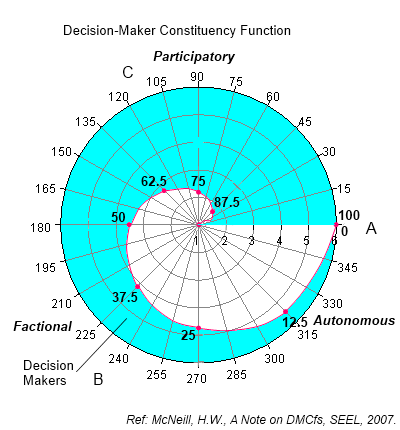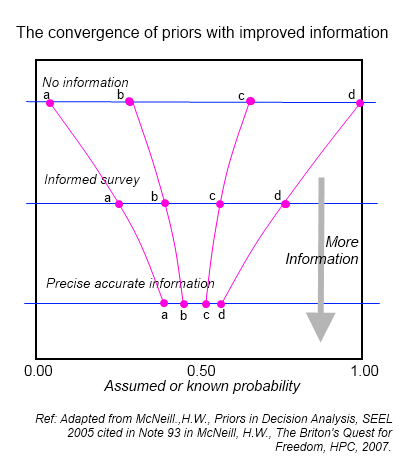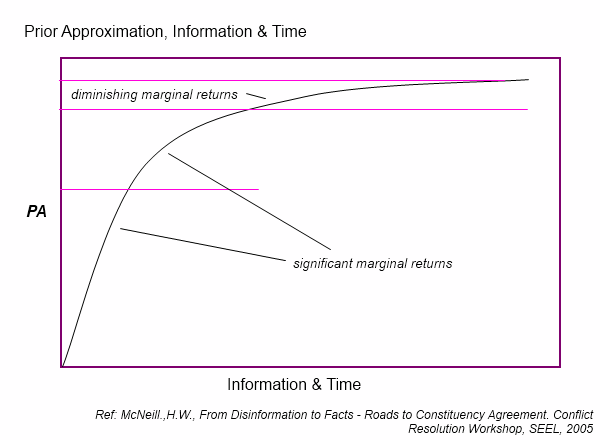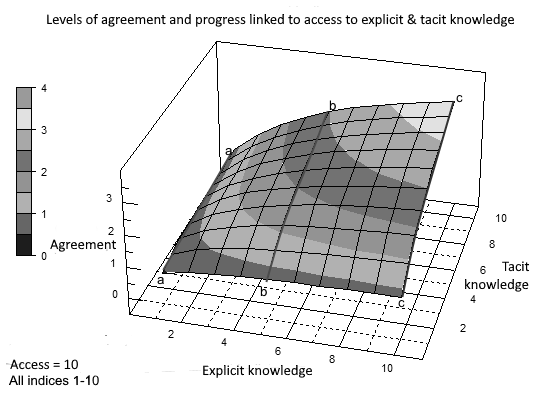 | |||||||||||||||
The conflict resolution paradox
One hears more about conflict resolution than about conflict avoidance. The inability of political systems to avoid conflict is what, in the end, causes a need for conflict resolution. But by that time enormous damage can have been wrought on societies including death, starvation and disease. The call for conflict resolution often arises as a result of stalemates between antagonists where neither is "getting their way". Typical instances include the USA Afghan war, the Syrian conflict, multiple impositions of sanctions on various countries. However the more intelligent way of behaving is one which doesn't countenance conflict or aggression as a legitimate means of resolving social, political and economic issues. Indeed, most religious teachings and principles err on the side of avoidance of conflict. Ignorance A fundamental tenet of LST is that without facts we cannot shape the significance of most things. There is a fundamental requirement for truth, not revealed religious truths but just facts concerning any situation. William James stated that truth "is what happens". However, the problem is that who communicates what happens can alter emphases, timing of events and even assign motivations to different people as to why something happened. As a result what is reported as truth is not always the truth. What is more common is that what is communicated serves the interests of the communicator. This situation has taken on a worrisome form in corporate media "pushing" certain interpretations of events in order to favour the interests of specific political parties, corporations and other interest groups. The problem with this tendency has been the invention of events and associations which in reality do not exist and the repetitive insistence that these inventions are the truth. The degree to which this type of behaviour can advanced is a function of the degree to which media and the political class in general prevent a more generalized access by the public to information. This system operates successfully for those who manage it to the degree that the public remains ignorant of the true facts. The Minority Principle
Building Agreement for Better Decisions Chapter 23 in "The Briton's Quest for Freedom .. Our unfinished journey…" sets out the basic articles of the Minority Principle . This is designed as a constitutional amendment to promote the full consideration of the preferences of all affected by a decision with the objective of ensuring that any final decision does not impinge of the freedom of expression of any member of a group. The Minority Principle in its entirety also removes the almost 50 specific constraints on individual freedom that exist as a result of administrative and political manipulation of the existing elements of the British Constitution. Why replace the Majority Principle? A common retort to the whole concept of a Minority Principle, especially on the part of politicians, is that it is impossible to get everyone to agree on a decision and this is why things should be decided by majority vote. Unfortunately, as we know, the "majority principle" put in power a government (1997) on the basis of their having gained about 20% of the electorate support and this government took us to two wars against the wishes of 80% of the electorate. One might say that anything that can avoid that sort of abuse is better than what we have now. Clearly where there exist identifiable minority groups or a specific decision requires consideration where there may be people who might disagree it is important to distinguish why there is disagreement. What is a decision? For this discussion we define a decision as an irrevocable allocation and use of resources to actions designed to implement the processes required to achieve a specific objective. The fact that resources will be spent as a result of a decision make decisions important. Priors Everyone, as a result of background, upbringing, nature, education and experience have differing interests and understandings of the operational details of any process. Depending upon the levels of accurate knowledge people have on different topics they will have different personal estimates of the likelihood of the degree to which cause and effect relationships will result in a specific outcome. An individual's estimate of the likelihood of any event is known as a prior. Therefore people agree on the likely outcome of a decision because they all understand cause and effect relationships surrounding the outcome and the process required to establish that outcome (deterministic model) then they are likely to agree, if the specific outcome identified is what they want. However, when the deterministic model is less well defined or the relationships not clear there is a need to collect more information so as to understand better the likely outcome of a decision as well as perhaps identify better options for securing desirable outcomes. The objective of the exercise is to bring people's priors closer together so as to extend the degree of agreement across a population of decision-makers. Besides the information on cause and effect relationships, that is, what determinants or factors will influence events so as to achieve an outcome there still remains a need to agree on the likelihood of such determinants or factors being present or available so as to achieve the final objective. This involves a need to agree on the probability of events occurring and determinants being as expected in order to achieve the outcome desired. Again this is a question of sufficient high quality information being made available to bring priors closer together. The diagram below shows a "Decision-Maker Constituency Function" which equates 360o with a range of constituency participation in decision-making from 0% to 100%. Starting at point A we have an imaginary situation where there is one decision-maker and the constituency is simply not involved (generally classified as autonomous decision-maker). As we move clockwise the percentage of the constituency included in the decision-making process increases (the blue zone) rising from 1% to around 37% in the B zone. This is by no means full participation but can be classified as factional decision-making where a reduced number of people make the decisions. From then on the percentage of the constituency involved in decision-making increases up to 100% participation. Once we move above 60% participation the process can be loosely defined as participatory (Zone C).  The main issue is that as we move up through the levels of participation the complex of different types of people that are included in the process increases and therefore the dispersion of priors on any particular question will tend to diverge. 
Because within the political processes politicians have an agenda they wish to sell, there tends to be a bias in the way the case is argued. Indeed, often there is no analysis but rather an assertion that one thing is better than another. This immediately creates disagreement and the result of such tussles is a vote where the "majority" win leaving a disgruntled "minority". The problem is that the combative exchanges where partisan interests are bent on conquest, winning the argument based on a vote, there is very little investment in the provision of a balanced decision analysis where all of the facts are laid out. As a result no attention is paid to trying to merge priors or even looking for better options. Knowledge, Information, Data & Communications Communications techniques and technologies have a vital role in collecting data to provide information of specific issues and appropriate analysis can build up a knowledge base of state of the art (what is currently achievable) as well as what might be achievable with associated levels of probability. Therefore the vital component in reducing disagreements that prevent effective participatory decision-making is logical data acquisition, analysis and the communication of knowledge in an appropriately transparent and rigorous manner. The diagram below illustrates a transition in individual priors as the levels of knowledge are increased. The basic tendency is for the priors to converge and therefore for there to be increased agreement on the facts.
 Gathering information can be time consuming and expensive so there tends to be a trade off between gathering sufficient information so as to help clarify the pertinent facts surrounding a decision so that priors can be brought close enough to achieve unanimous decisions. Normally the returns to investment in information gathering and gaining of knowledge on inter-relations is high at the beginning of a process with an immediate impact on prior approximation. However, there is a point beyond which the marginal gain in prior approximation to further investment in information gathering and analysis is too low to justify the expense. The diagram below illustrates this general relationship.  The success of the Minority Principle depends upon the collection, analysis and communication of relevant information to any particular decision so that there is agreement on the facts and probabilities surrounding any particular decision, the likely costs and likely outcomes. Without this investment in adequate information collection, analysis and its timely and appropriate communication to decision-makers, no matter how many, decision-making will tend to be factional, disruptive and outcomes will impinge of the freedom of others. The Minority Principle is all-inclusive and in terms of communities it represents an approach to community decision-making that reduces conflict. The challenge is to organize state of the art information and communications technologies to serve the specific purpose of delivering relevant high quality information wherever it is needed in support of this process. 1 McNeill, H.W., Chapter 23, "The Minority Principle" pages 247-264, in The Briton's Quest for Freedom Our unfinished journey ... 418pp, HPC, 2007.
|





